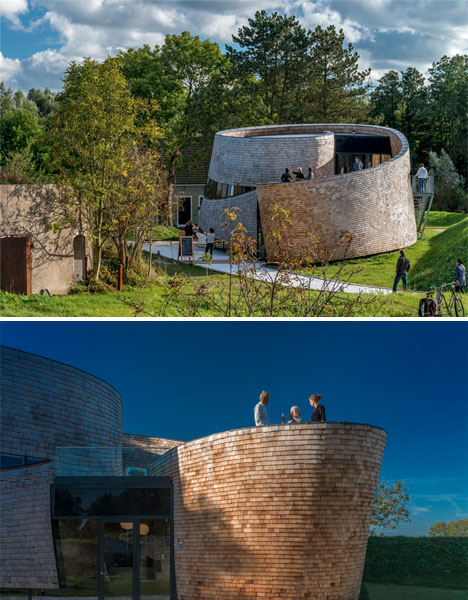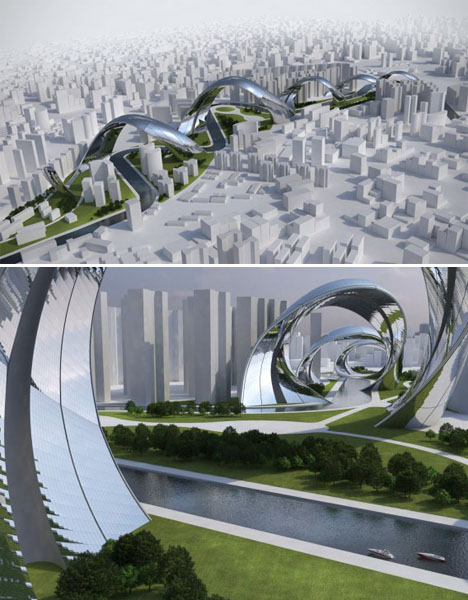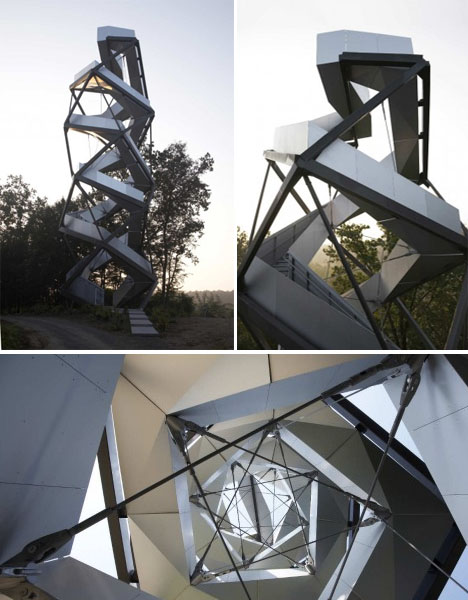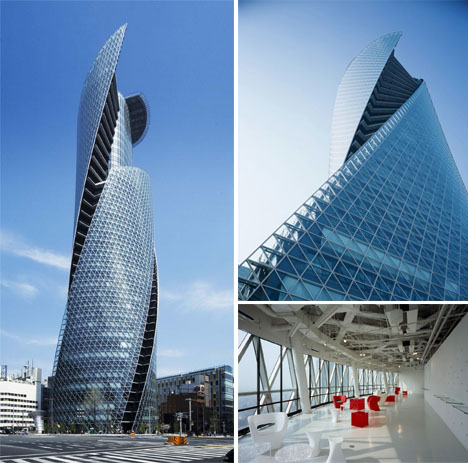Paviljoen Puur by Emma Architecten
A curving wall of timber shingles wraps around visitors as they ascend to the top of Paviljoen Puur, a visitor center by Dutch firm Emma Architecten. The spiral shape was inspired by the curves of the landscape. “We wanted anybody visiting the building to be puzzled about when it was built, and whether it is the future they’re looking at or the past,” said architect Marten De Jong. “To do this, the building had to have little or no reference to architectural elements. A window or a door usually depicts a specific age of architectural thinking, which would make it easy to pinpoint the year of its creation. Instead, the building comes forth from the landscape.”
Spiraling Shanghai
An undulating silver spiral meanders along the river valley of Shanghai, rising to accommodate the height of skyscrapers and then lower to the ground to offer views of the city from every angle. The ‘Sity’ project by Sonik Module rethinks architectural forms with an unexpected shape that’s earthquake resistant with maximum sunlight exposure, natural ventilation and its own means of renewable energy production.
Observation Tower on the River Mur
It’s not uncommon to see shapes like this in the concept stage, but they rarely make it to reality. This observation tower on the River Mur in Austria by Munich-based firm terrain:loenhart&mayr is part functional structure, part sculpture based on the shape of a double helix. A circular path ascends to the top, passing through various levels of the forest. The architects were inspired by a historical double spiral staircase in Austria’s Graz Castle, built around 1500.
Mode-Gakuen Spiral Towers
Japan’s shimmering Mode-Gakuen Spiral Towers house educational facilities for fashion design, computer programming and medical support in three different ‘wings.’ The spiral shape aids in ventilation and use of natural light, and was inspired by “the enthusiasm of students from three schools, twining and rising up to the sky then departing to the real world.”



